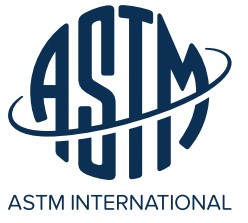ASTM International
Contents |
[edit] Introduction
ASTM International was originally referred to as the American Society for Testing and Materials. In 2001, it became an international standards organisation that creates and delivers voluntary technical standards for products, materials and services. There are currently more than 12,000 ASTM International standards that apply to systems and components manufactured around the world.
[edit] History
The precursor to ASTM International was the American Section of the International Association for Testing Materials, launched in 1898 by scientists and engineers intent on resolving structural issues occurring in railroads.
The earliest efforts of the organisation were led by Charles Dudley an employee of the Pennsylvania Railroad. Dudley’s role at the railroad was to research materials the company relied on for its operations. Consequently, the first standard was one for steel that could be used to manufacture rails less prone to breakage.
As the first standards organisation, ASTM International was established before the British Standards Institution (BSI) and the International Organisation for Standardisation (ISO). These organisations frequently incorporated or adopted ASTM standards, especially in areas such as steel, oil and other industrial materials.
In 2009, ASTM International began to certify services for products and personnel, which led to a partnership in 2016 with the Safety Equipment Institute (SEI). This organisation also works with labs and manufacturers to offer certifications.
Currently, ASTM members come from more than 140 countries.
[edit] Compliance
Compliance with ASTM standards is not mandatory in most instances. However, this can change based on the circumstances related to adoption. This happens most frequently around issues associated with safety, particularly when dealing with cases involving large organisations (such as high profile corporations or government entities). They are also frequently adopted for products or services used by (or around) children.
[edit] Example
On 8 July 2020, ASTM International released a proposed standard to evaluate the tensile performance of fibre-reinforced concrete (FRC). The proposed standard (WK73384) will be useful to contractors, testing agencies and researchers.
This standard and others play a role in product development and safety in more than 90 industry sectors:
- Additive manufacturing (including 3D printing).
- Chemical standards (including research, production, and environmental safety of products manufactured from rubber, plastics and raw materials).
- Construction standards supporting the building industry.
- Consumer product standards.
- Energy standards (including research around renewable energy and climate change).
- Green construction.
- Healthcare services, products and technology.
- Metals (including steel, copper, aluminium and others associated with infrastructure construction projects, consumer items, equipment and machines).
- Safe and sustainable highways (including quality and performance for beneficial returns on infrastructure investments).
- Sustainability (including standards that promote cleaner air and water; eco-friendly homes and office buildings; enhanced waste management and recycling programmes; improved environmental assessments and so on).
- Testing programmes.
- Textile standards (including home furnishings, vehicles, mobile phones and more).
[edit] Related articles on Designing Buildings Wiki
- ASTM International architectural model program standard E3223.
- British Standards Institution.
- Construction products regulations.
- International Organisation for Standardisation ISO.
- Standardisation.
- Standards in the construction industry.
- Testing, inspection and certification (TIC) market.
- Underwriters Laboratories UL.
Featured articles and news
RTPI leader to become new CIOB Chief Executive Officer
Dr Victoria Hills MRTPI, FICE to take over after Caroline Gumble’s departure.
Social and affordable housing, a long term plan for delivery
The “Delivering a Decade of Renewal for Social and Affordable Housing” strategy sets out future path.
A change to adoptive architecture
Effects of global weather warming on architectural detailing, material choice and human interaction.
The proposed publicly owned and backed subsidiary of Homes England, to facilitate new homes.
How big is the problem and what can we do to mitigate the effects?
Overheating guidance and tools for building designers
A number of cool guides to help with the heat.
The UK's Modern Industrial Strategy: A 10 year plan
Previous consultation criticism, current key elements and general support with some persisting reservations.
Building Safety Regulator reforms
New roles, new staff and a new fast track service pave the way for a single construction regulator.
Architectural Technologist CPDs and Communications
CIAT CPD… and how you can do it!
Cooling centres and cool spaces
Managing extreme heat in cities by directing the public to places for heat stress relief and water sources.
Winter gardens: A brief history and warm variations
Extending the season with glass in different forms and terms.
Restoring Great Yarmouth's Winter Gardens
Transforming one of the least sustainable constructions imaginable.
Construction Skills Mission Board launch sector drive
Newly formed government and industry collaboration set strategy for recruiting an additional 100,000 construction workers a year.
New Architects Code comes into effect in September 2025
ARB Architects Code of Conduct and Practice available with ongoing consultation regarding guidance.
Welsh Skills Body (Medr) launches ambitious plan
The new skills body brings together funding and regulation of tertiary education and research for the devolved nation.
Paul Gandy FCIOB announced as next CIOB President
Former Tilbury Douglas CEO takes helm.
UK Infrastructure: A 10 Year Strategy. In brief with reactions
With the National Infrastructure and Service Transformation Authority (NISTA).























